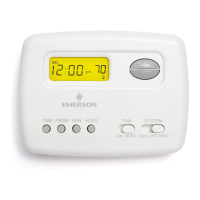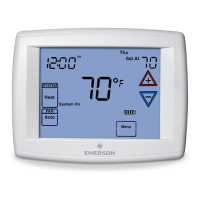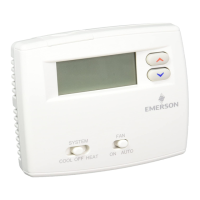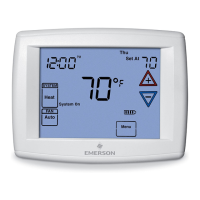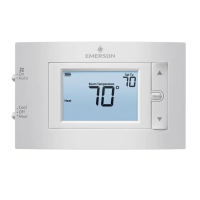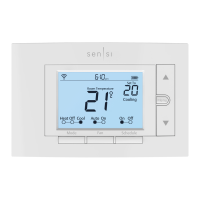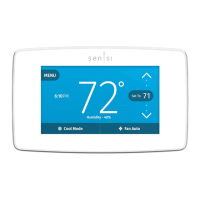20 Delmarva Power Web-Programmable Thermostat Homeowner’s Manual
DDWTMS1317B—Delmarva Power IT900 Thermostat Manual
(Version 2 Thermostat with New Screen Shots)
Piece: Manual
Quantity: 000,000
Size: sssss
Colors: ccccc
Finishing: ffffffffff
Mail: mmmmmmm
Program Specic Checklist Name: Date:
☐ Phone Number _________ _________
☐ URL _________ _________
☐ Program Details _________ _________
GRAPHIC
DESIGNER
☐ SPELL CHECK
CREATIVE
DIRECTOR
PROOFREADER COPY
SUPERVISOR
COPYWRITER CREATIVE SERVICES
MANAGER
ACCOUNT
MANAGER
DDWTMS1317B
Delmarva Power IT900 Thermostat Manual (Version 2 Thermostat with New Screen Shots)
Job Opened: November 1, 2013
Requested In-Home Date: December 1, 2013
Latest Revision: November 5, 2013
Approved: December 4, 2013
Troubleshooting
No Heat
Possible Cause Corrective Action
Pilot light not lit. If it will not stay lit, call for service from your HVAC
contractor.
System switch not set to HEAT. Press the thermostat’s SYSTEM button one or
more times to select HEAT and press
to raise the
temperature setpoint above room temperature.
Furnace Lock-Out Condition. Heat may also be
intermittent.
Many furnaces have safety devices that shut down
when a lock-out condition occurs. If the heat works
intermittently, contact the furnace manufacturer or your
HVAC contractor for assistance.
Heating system requires service or thermostat requires
replacement.
To diagnose this condition:
Press SYSTEM button to select HEAT and press
to raise the temperature setpoint above room
temperature. Within a few seconds the thermostat
should make a soft click sound. This sound usually
indicates the thermostat is operating properly. If the
thermostat does not click after being reset, contact
Delmarva Power Energy Wise Rewards for a replacement
thermostat. If the thermostat does click, contact the
furnace manufacturer or your HVAC contractor for a
service visit to verify the heating is operating correctly.
Furnace or Air Conditioner Cycles Too Fast or Too Slow (Narrow or Wide Temperature Swing)
Possible Cause Corrective Action
The location of the thermostat and/or the size of the
heating system may be influencing the cycle rate.
Electronic thermostats, like this one, normally
provide precise temperature control and may cycle
faster than some older mechanical models. A faster
cycle rate means the unit turns on and off more
frequently to maintain the desired temperature, but
runs for a shorter time so there is no increase in overall
energy use.
13_DDWTMS1317B_IT900_v2_TSTAT_MANUAL-CFO-120413.indd 20 12/4/13 9:42 AM
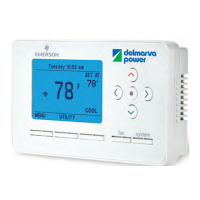
